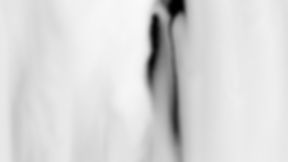
SCROLL
PHOTOGRAPHY & CHILDHOOD MEMORY
Untold
Life StorIES
and their FATE
IN Australia
Untold
Life StorIES
and their FATE
IN Australia
CONTACT
CONTACT
TOP
Schirach, Baldur von. (1967). Ich glaubte an Hitler. Hamburg: Mosaik, p. 227.
Schirach, Baldur von. (1967). Ich glaubte an Hitler. Hamburg: Mosaik, p. 227.
australian war camps
Nov. 20th 1941 – 1947
The single internees were taken to the “Loveday” war camps and six families (sixteen persons including four children) to “Tatura” Camp 3, at Rushworth.
"In front of us there were 30 metre long corrugated iron huts (dining halls!) which looked like storage sheds, but with windows. Then followed in parallel rows other small huts in the same style: the “bungalows” we had been dreaming of. That wasn’t all. When in my mean state I began to look around, I saw a wooden watchtower in front of the barbed wire with a soldier behind a machine gun. There was certainly no longer any doubt that we were in a prisoner of war camp. I fully realised then into what a trap I had fallen. It was no use asking the Lord for help because we were no longer in God’s hands, but in the hands of the British from whom there was no escape."
"We drove off along the road that leads to Sydney. A signpost appeared with the description Camp 1, 2, 3, 4 and soon we arrived at Camp 3, Tatura. All the women began to weep tears and the impression was a depressing one. Even Zoubek became entirely still. After the meal there was another baggage control, females in uniforms for the women and soldiers for the men. And the camp gate opened itself to us."
"We reached our ultimate destination, Tatura, in rural northern Victoria on the afternoon of 20 November 1941. Hastily set up some months before, the camp covered just over six and a half hectares and was secured by high fences and coils of barbed wire. Guards with machine guns watched from towers and with search lights all night. People were housed in four compounds under congested conditions in military-style barracks, just over 860 persons at its maximum number. There were twice daily roll calls of all men on the parade ground and inspections of all families every day outside their huts. No cameras or radios were permitted and no newspapers for two years. Mail was censored both ways. It was a situation which might have bonded the internees as a community in reaction against its captors."
After the end of the war, many of the civilian internees in Australia, including those of Germany, were deported to their own countries. Some could stay, including the German civilians from Persia, though they had to find accommodation and employment in order to make enough money to pay for the return of their families (wives and children).
Official records of Prisoner of War/Internee Hans E. Wulff (R36838). National Archive of Australia.

Loveday War Internment Camp. Etching on Paper by Internee Carl von Brandenstein (R36413), 1944. Wulff Collection. © P. Khosronejad.

Loveday War Internment Camp. Linoleum Print on Paper, 1942. Wulff Collection. © P. Khosronejad.

Loveday Song. Black Pencil on Paper. 1941. Wulff Collection. © P. Khosronejad.

Loveday War Internment Camp. Etching on Paper by Internee Carl von Brandenstein (R36413), 1944. Wulff Collection. © P. Khosronejad.
Visual art made by German civilian internees from Persia inside the Loveday War Camp between 1941 to 1945. Wulff Collection. © P. Khosronejad.
November 19th 1941, from the personal diary of Johann Friedrich Bambach (1883-1962), detained on August 16th 1941 in Isfahan, Iran. Australian War Prison Registration No: R36428.
November 20th 1941, from the personal diary of Rudolf Girschik (1910-1989), detained on August 30th 1941 in Karind, Kermanshah, Iran. Australian War Prison Registration No: R36358.
From a book chapter written by Helga Girschik, detained as a child of six years old with her family on August 30th 1941 in Karind, Kermanshah, Iran. Australian War Prison Registration No: R36356. 2010. "At Home in Exile: Ambiguities of War-time Patriotism”, pp 169-184, in E.Turner-Graham and C. Winter eds, National Socialism in Oceania: A Critical Evaluation of its Effect and Aftermath. Peter Lange: Frankfurt am Main.
